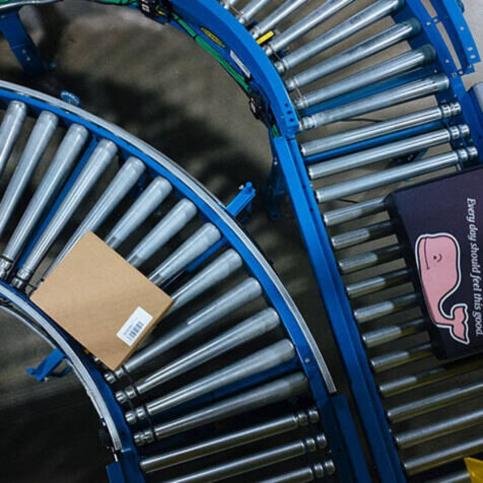
Choosing Slider Beds or Roller Beds for Your Conveyor Belts
Once you have selected the right conveyor belt for your system, the next step is to decide on whether you will be using a slider bed or a roller bed. Choosing the right kind of bed is pivotal in making sure that your conveyor belt runs optimally for your applications. There are two main types of beds that are used with most conveyor belts: slider beds and roller beds.
Today, we will be comparing roller beds and slider beds so you can decide which will work better with your conveyor belts.
What are conveyor beds used for?
Conveyor beds are a component of conveyor systems that are sometimes overlooked. However, they play a key role in supporting conveyor belts to safely and efficiently transport products on a conveying line. As such, the biggest factor determining your decision on which bed type to use is the kind of products your conveyor will be transporting.
What are slider beds?
Slider beds are constructed of sheets of metal. Because of their flat and even surface, they provide incredible stability for products that are small or unusually shaped. With that said, the movement of the conveyor belt over the comparatively large surface of a slider bed generates more friction. To counteract this friction, conveyor systems have higher horsepower. This also helps the conveyor to achieve higher speeds. However, this combination of high speeds and friction may result in quicker belt wear, and as such you will need to maintain a proper inspection and repair schedule for your conveyor belt. One of the most popular uses of slider beds is for parcel handling.
What are roller beds?
Roller beds are constructed of a series of rollers. As the conveyor runs, the conveyor belt moves along the rollers and causes them to turn. Because of this symbiotic operation, roller beds generate a lot less friction as compared to slider beds. This also helps the conveyor system utilize less energy, with fewer drives needed to get operations going. This means that roller beds will be better suited to handle larger loads without resulting in any premature belt wear and tear. However, the gaps between rollers make roller beds unsuitable for small or irregularly shaped products as well as overly-high speeds.
As you can tell, there are key distinctions between roller beds and slider beds and using the wrong type of bed for your conveyor may bode ill for your operations. Some more sophisticated systems even utilize a combination of both beds in a customized configuration. For more complex solutions, you should consult extensively with material handling experts such as Norpak Handling, whose representatives will assist you in selecting all the right components for your ideal conveyor system. Norpak's experienced sales staff is capable of making the selection and would typically do this when making a recommendation. Contact Norpak Handling today to have all your material handling needs addressed.









